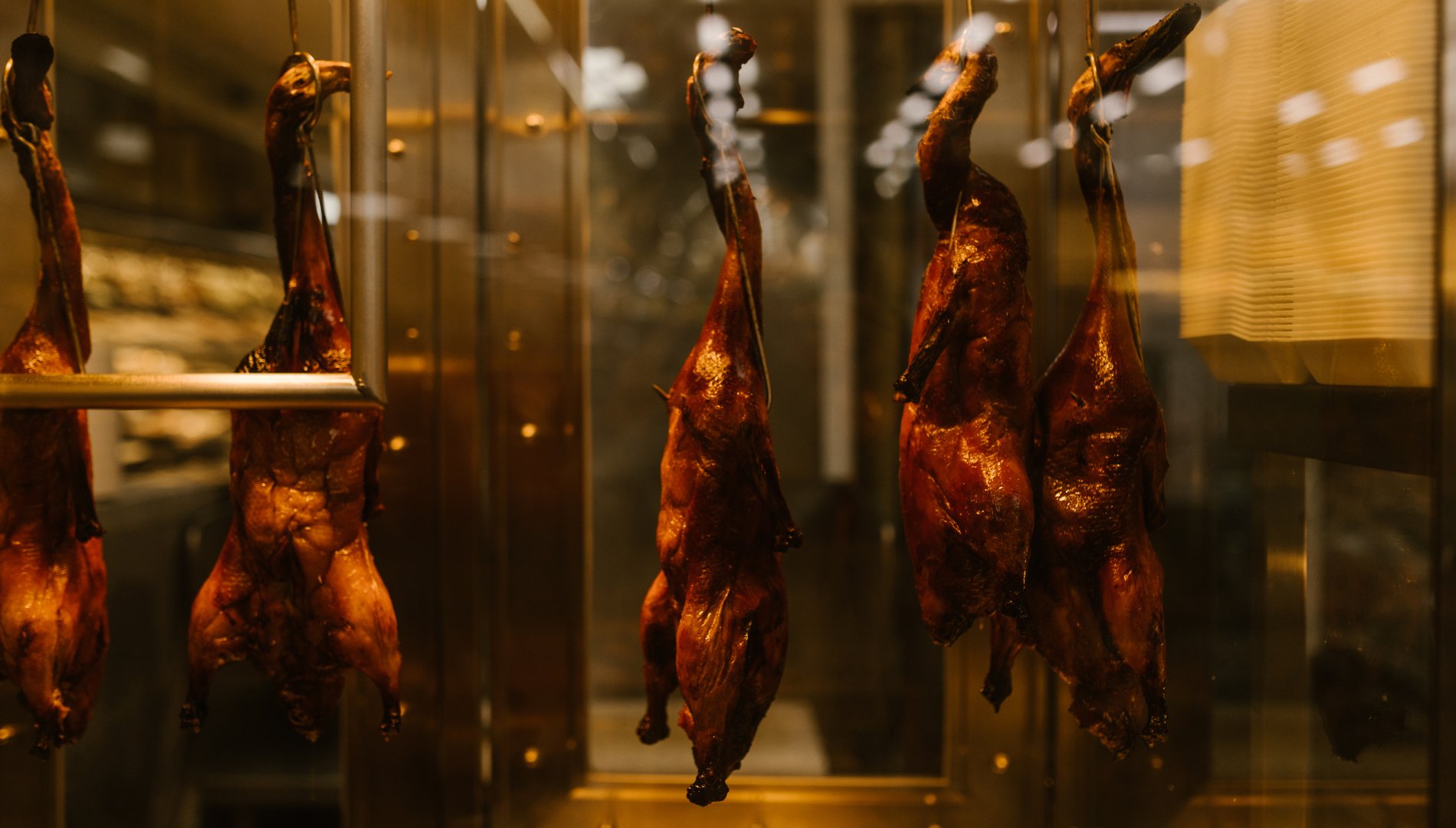Peking Duck, a culinary masterpiece with a golden, crispy skin, hidden inside is a soft, sweet, fragrant meat. It represents the sophistication, class and mastery of Chinese cuisine, telling a long story about history, culture and the chef's ingenuity.
From Jiangnan to the Capital
Interestingly, despite its “Beijing” name, this famous roast duck dish did not originate from the northern capital. Ducks are not a common poultry like pigs, chickens or sheep in this arid land. Traditional Chinese duck dishes often originate from the fertile Jiangnan region, where flocks of ducks swim freely in rice fields and ponds, and are processed into rustic yet quintessential dishes such as Nanjing salted duck or Hangzhou duck soup.

Peking Duck, a culinary masterpiece with golden, crispy skin, hidden inside is soft, sweet, fragrant meat.
According to history, roast duck appeared in Hangzhou in the 13th century, initially as a dish sold on street stalls. Gradually, it became a specialty of Nanjing, the first capital of the Ming Dynasty.
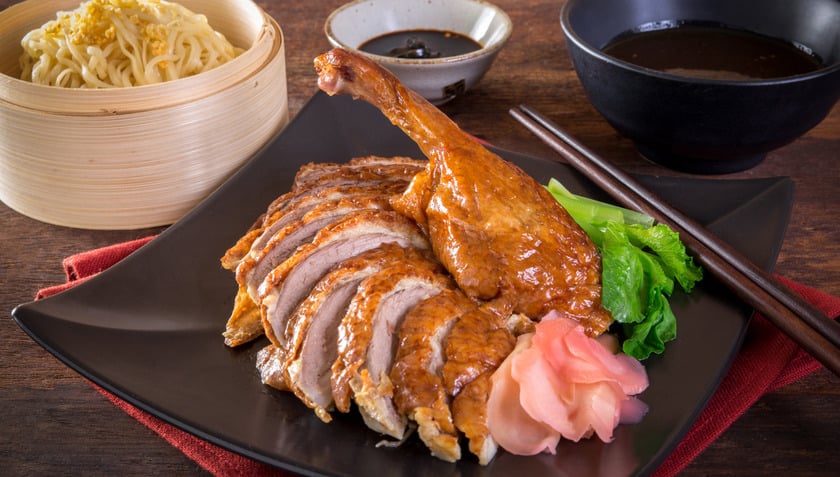
Since ancient times, it has been very famous and frequently appeared in royal menus during the Yuan, Ming and Qing dynasties.
It was not until after 1420, when the Yongle Emperor moved the capital to Beijing, that roast duck appeared here with the royal family and the palace chefs. Initially, it was still called "Jinling roast duck" (Jinling is the ancient name of Nanjing). However, over time, talented chefs in Beijing successfully crossbred a local duck breed with snow-white feathers, thin skin and tender meat, which was considered to be far superior to the Nanjing duck breed, thus laying the foundation for the famous "Peking White Duck" today.
The magic behind the crispy skin
To create a perfect Peking duck, each step requires meticulousness and masterful technique. White Peking ducks, usually raised in the suburbs and carefully fattened, will undergo an elaborate preparation process. After cleaning and plucking the feathers thoroughly, people skillfully pump air between the skin and the meat to create a puffiness, making the duck skin crispy when roasted. Next is the step of blanching in boiling water to tighten the skin, drying naturally, then brushing a layer of special malt syrup to create a shiny, attractive reddish brown color. Another secret to keeping the duck meat juicy and delicious is that chefs often pour a little boiling water inside the duck before putting it in the oven.

Peking Duck is not just a dish, but a work of art, a symphony of flavor and sophistication.
Peking duck is roasted using two main methods, each with its own characteristics. The traditional method is the open oven (Gualu) method, where the duck is hung on a metal rack in an oven that is heated by firewood from fruit trees such as jujubes, pears, or dates at high temperatures. The chef must constantly rotate the duck to ensure even cooking, and add firewood 5-6 times during the roasting process, allowing the duck meat to absorb the delicate aroma of the fruit. This technique was developed by chefs in the royal kitchen of the Forbidden City, where the Qing Dynasty was particularly fond of roasted meat dishes. Historical documents also record that in 1761, Emperor Qianlong enjoyed roast duck up to 8 times in just two weeks, showing the irresistible appeal of this dish.
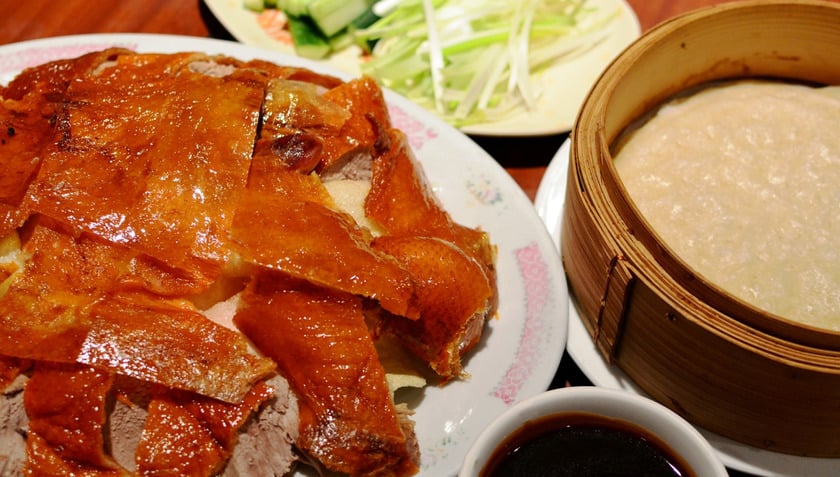
It was only after 1420, when the Yongle Emperor moved the capital to Beijing, that roast duck appeared here. Initially, it was called "Jinling roast duck".
Alternatively, the closed oven method (Menlu) is an earlier technique that originated in Nanjing. The chefs light a fire in the middle of the oven until it is just smoldering coals, then hang four ducks in the oven door and close it. This method maintains high humidity inside the oven, making the duck meat fluffy and tender, while the skin remains well connected to the meat. The closed oven is also suitable for roasting multiple ducks at the same time.
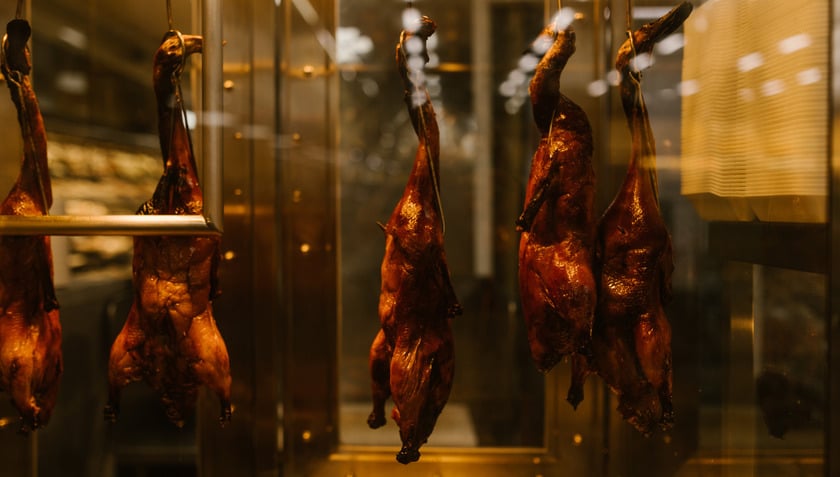
The closed-oven baking technique was developed in Nanjing. Chefs lit a fire in the middle of the oven until it was just smoldering coals, then hung four ducks on the oven door and closed it.
In the late 19th century, a poultry merchant named Yang Quanren brought the open-oven technique from the imperial court to the common people. After many years of selling ducks and chickens on the sidewalk, in 1864, he opened the Quanjude restaurant – one of the most famous Peking duck brands today, employing former imperial chefs. Quanjude's roast duck, with its shiny skin and succulent meat, quickly became a favorite among the city's upper class and literati. Through the ups and downs of 20th-century Chinese history, Quanjude has become one of Beijing's leading culinary brands, a must-see destination for tourists when visiting.

Enjoying Peking duck is like participating in an enchanting culinary ritual.
Enjoying Peking duck is not just a meal, but also participating in a fascinating culinary ritual. At famous restaurants, the chef in a pure white uniform will push a cart to the table, on which is placed a plump duck with shiny caramel-colored skin. With a long, rectangular-bladed knife, he will perform skillfully, cutting the duck right at the table into more than 100 even pieces, including crispy skin and tender meat. Luxury restaurants also offer "whole duck banquets", processing every part of the duck, from the heart, gizzard to bones, into many different dishes, elevating the culinary experience to the pinnacle of art. The dish is attractive from flavor to performance, making it impossible for diners to take their eyes off.

The dish is attractive from flavor to performance, making diners unable to take their eyes off.
Over the centuries, Peking duck has gone beyond China’s borders, becoming an international culinary icon. It acts as a cultural ambassador, introducing the quintessence of Chinese cuisine to friends around the world and is loved in many countries around the world. Peking duck restaurants have appeared in many major cities, attracting both locals and tourists looking for an authentic Chinese culinary experience.
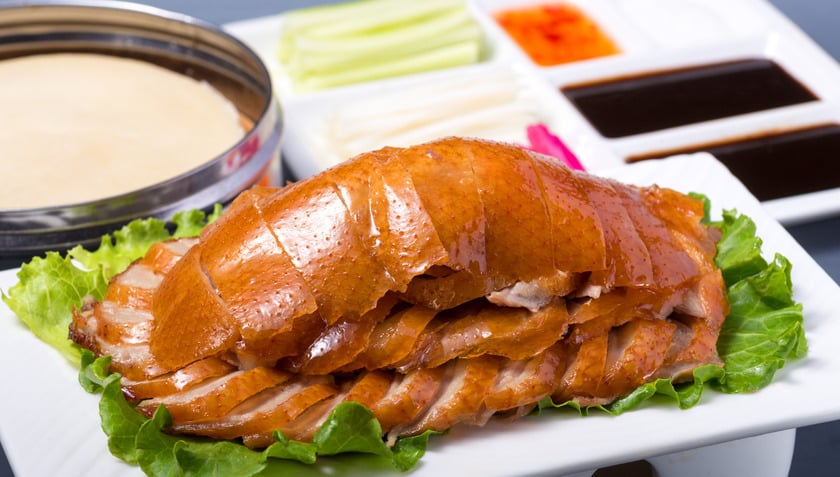
However, in the modern context, some Chinese gastronomists have also expressed concern about the declining quality of Peking duck, even in once-famous restaurants. The main reason given is the use of conventional ovens instead of traditional wood-fired ovens, which has lost the distinctive flavor and perfect crispiness of the duck skin. However, it cannot be denied that the popularity of the roast duck business in many cities has brought this once-elite dish closer to the masses, making it an indispensable part of the diverse culinary picture of China and the world.





